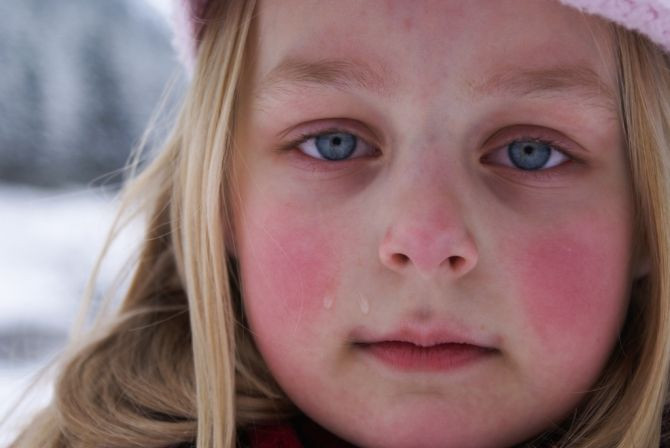Stressful Home Life Linked To Obesity in Young Girls

Girls living in stressful home environments, where violence, depression and other disturbances are common, as toddlers, are more likely to be obese by age 5, according to a new study.
Researchers said that girls from disadvantaged families and who were exposed to two are more social stressors at age 1 or age 3 were most likely to become obese, compared to other preschool girls with no such exposure, according the new study published online ahead of the May issue of Pediatrics.
However, there were no significant associations between stressful home like and obesity for boys, according to researchers.
"Identifying modifiable mediators of these associations can better inform intervention and prevention efforts to curb childhood obesity," Shakira Suglia of Columbia University's Mailman School of Public Health in New York City, and colleagues wrote in the study.
Suglia and her research team identified 1,605 preschools from records of the Fragile Families and Child Wellbeing Study that examined mother-child pairs from 20 major U.S. cities and found that 17 percent of them were obese and 57 percent of them had experienced at least one of the listed stressors: domestic violence, hunger, moving frequently or living in a shelter, a father in prison, a depressed mother or one who had alcohol or drug dependency.
The most common stress exposures during age 1 and age 3 were housing insecurity, maternal depression and intimate partner violence.
Researcher adjusted for sociodemographic factors and found that girls who were exposed to at least two social stressors either at age 1 or at age three were twice more likely to become obese by age 5, but those with a high cumulative risk at both ages were not more likely to be obese at age 5, according to researchers.
The findings suggest that the reason why there was a lack of similar association among boys could be associated with the differences in the way boys and girls cope with stress, with girls more likely to respond with emotional and binge eating and boys more likely to respond with becoming aggressive, impulsive, and being overactive.
The relationships between social stressors and obesity in girls could reflect parenting behaviors, like keep unhealthy foods in the house, use of food as a means of comforting a child, physical inactivity and reduced availability for caretaking, according to researchers.
However they noted that there could be more direct biological mechanisms that may better explain the cause for obesity. The child’s stress response system could be disrupted resulting in higher stress hormone production that can ultimately lead to gains in belly fat and compulsive eating.
"Repeated stimulation of the hypothalamic-pituitary axis by environmental stressors may elevate cortisol levels, dysregulate neuroendocrine mediators of the reward pathway, and influence compulsive feeding practices as well as visceral fat accumulation," they wrote.
Suglia and colleagues acknowledged some of the limitations of the study including the loss of some participants during follow up, food insecurity and maternal substance was assessed with a standardized tool and the possibility of social desirability bias on the mother’s reports.
The findings are important because an obese child is more likely to be obese as a teenager, and obesity is linked with a variety of health related problems that can potentially lead to heart disease, stroke, type 2 diabetes, high blood pressure and certain cancers.
Researchers said that when pediatricians and primary care doctors talk to patients and families about obesity prevention, the discussion should go beyond eating habits and exercise, and clinicians should ask about home life and recommend families referral services and programs to help patients cope with the stressors in their life.



























